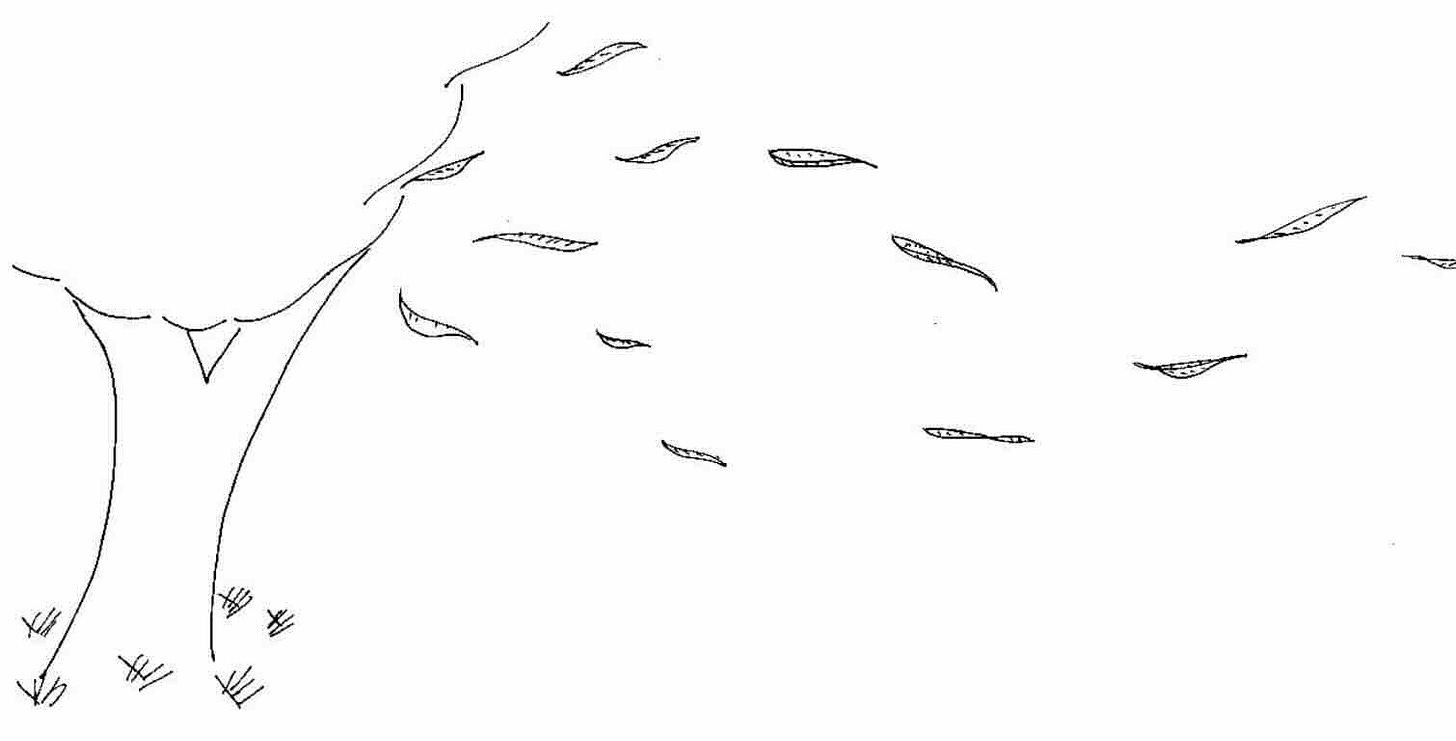Falling Leaves, Dropping Balls...
Summary & slides from Aksel Biørn-Hansen's August session, and updates for Low-Carbon Conversations in November & January
Hey, carbon curious folks! I know not all of you who read this are experiencing the beautiful autumnal phenomenon of orange and red leaves falling to the ground. But this fall has been particularly colourful —— and unexpectedly busy for me. I’ve dropped a few balls…
Please enjoy below the low-carbon participatory inspiration offered by Aksel Biørn-Hansen at Session #1 of the August Low-Carbon Conversations. We’re very fortunate to have him as a speaker next month (November) as well. Stay tuned for more details and a confirmation of the date. (Zoom links can be found HERE.)
Summary of the August 15th Low-Carbon Conversations:
SESSION #1: “The FLIGHT project: Attempts and struggles at unsettling the status quo of academic flying at a Swedish University”
Aksel Biørn-Hansen presented the hands-on, collaborative FLIGHT project at KTH Royal Institute of Technology. Focusing on flying as an area where the university is not currently meeting goals to reduce CO2 emissions, Aksel and his colleagues designed meaning-making workshops to visibilise data about who flies and how much in different university departments. The project aimed to engage university department members with their own flying data, enabling them to co-create knowledge and literally ‘touch’ their data.
Enabling an embodied experience of flight data
Take a look at the slides Aksel has generously shared to see how the workshops physicalised data using poker chips (see slides #27–30).
As participants each moved and stacked poker chips to show the number and type of flights they had taken in the past academic year, they were able to confront together the who and how of the flying their department does, and to examine disparities and hidden inequalities of mobility and CO2 emissions. As Aksel explained, these workshops opened up opportunities for people to stay with the data and engage with it. That this process happens at the department level——as opposed to a top-down or bottom-up approach to intervention——was vital (see slide #20). The FLIGHT project revealed that, prior to the workshops, nobody really knew how much their department was flying.
Touching data transforms people
One of the goals of this initiative is to unite knowledge and action to compel people to act (see slide #21). This involves discomfort——all the uncomfortable elements of being a social being. As Aksel explained, this is emotional work by necessity: “weighing-in” events where we collaborate with other people can be collectively uncomfortable. But if the carbon budget is a commons, it requires this collective discomfort——and a collective responsibility for action. The participatory design of these workshops avoids the common trap of simply measuring instead of acting.
The FLIGHT project has led to other opportunities: Aksel was invited by the university to use a similar design to facilitate participatory carbon budgeting (see slide #41).
Questions and observations that arose in the discussion
How much flying is acceptable for a single person? — Where do we report on this? Where do we make flying behaviour visible, and where do we open discussion about flying——and in what context (i.e., for a single research project, for university recruitment)?
How do universities/organizations track the CO2 emissions of “unknown travellers,” like invited guests/speakers?
The challenge of different carbon emission calculators: they can create a huge difference in reporting.
Discussion can be richer when there is non-hierarchical openness——where researchers and custodians and other university staff can come together to engage in conversation.
Who are the actors? — Is sustainability a “whole institution” reality? How much power does the Office of Sustainability really have? What would enable faculty to step in and take the lead in lowering carbon emissions within departments? —— What synergies might be harnessed if university and research funders had low-carbon requirements, and if they joined low-carbon efforts of faculty?
Difficult questions worth discussing: What is a “good” trip? What is a “necessary” trip?
Measures that lower carbon can challenge an association’s economy; so, how do we change our professional associations?
Quotes that stuck in my brain and made it into my notebook
“Having a mandate is crucial. Without it, people will denounce you for being an activist.”
There is danger in cynicism: “If we become hopeless, who does the doing?”
“You can have sustainability either by design or by disaster.”
Next up…
I’ll send around a summary of Session #2 (“Virtually There”) in a future post exploring our decades-long ability to “be there” and suggesting how we might continue to develop online spaces that respond more generously to participant needs and preferences at virtual events.
In the meantime, the Low-Carbon Conversations is moving to a bi-monthly schedule. Stay tuned for information about upcoming sessions.
In November, we’ll learn how to implement the Art of Hosting in online spaces.
In January, we’ll kick off 2025 with adventures of a solar server.
Until next time, yours in low-carbon wayfinding,
Kate




